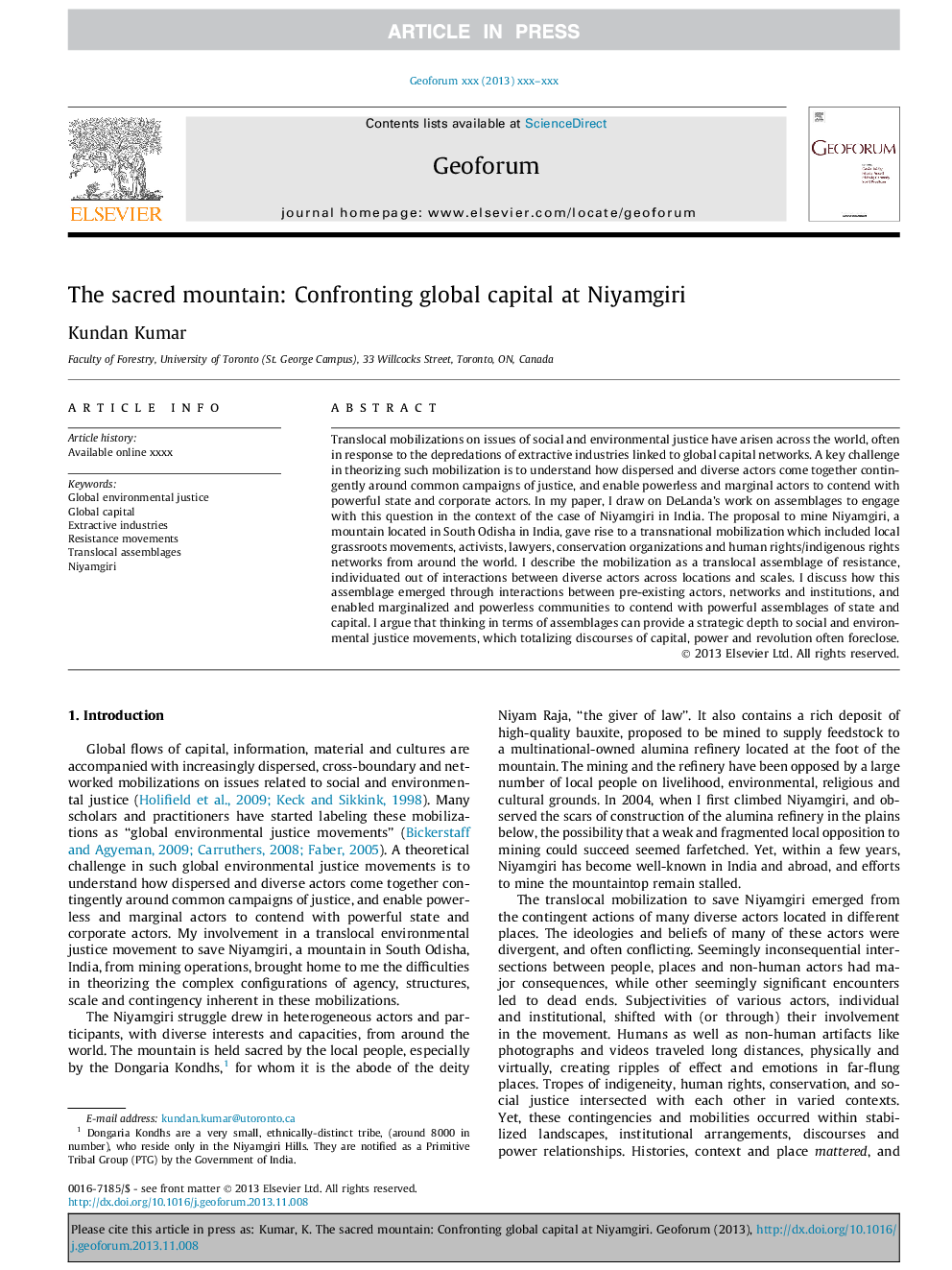| Article ID | Journal | Published Year | Pages | File Type |
|---|---|---|---|---|
| 5074016 | Geoforum | 2014 | 11 Pages |
Abstract
Translocal mobilizations on issues of social and environmental justice have arisen across the world, often in response to the depredations of extractive industries linked to global capital networks. A key challenge in theorizing such mobilization is to understand how dispersed and diverse actors come together contingently around common campaigns of justice, and enable powerless and marginal actors to contend with powerful state and corporate actors. In my paper, I draw on DeLanda's work on assemblages to engage with this question in the context of the case of Niyamgiri in India. The proposal to mine Niyamgiri, a mountain located in South Odisha in India, gave rise to a transnational mobilization which included local grassroots movements, activists, lawyers, conservation organizations and human rights/indigenous rights networks from around the world. I describe the mobilization as a translocal assemblage of resistance, individuated out of interactions between diverse actors across locations and scales. I discuss how this assemblage emerged through interactions between pre-existing actors, networks and institutions, and enabled marginalized and powerless communities to contend with powerful assemblages of state and capital. I argue that thinking in terms of assemblages can provide a strategic depth to social and environmental justice movements, which totalizing discourses of capital, power and revolution often foreclose.
Keywords
Related Topics
Social Sciences and Humanities
Economics, Econometrics and Finance
Economics and Econometrics
Authors
Kundan Kumar,
